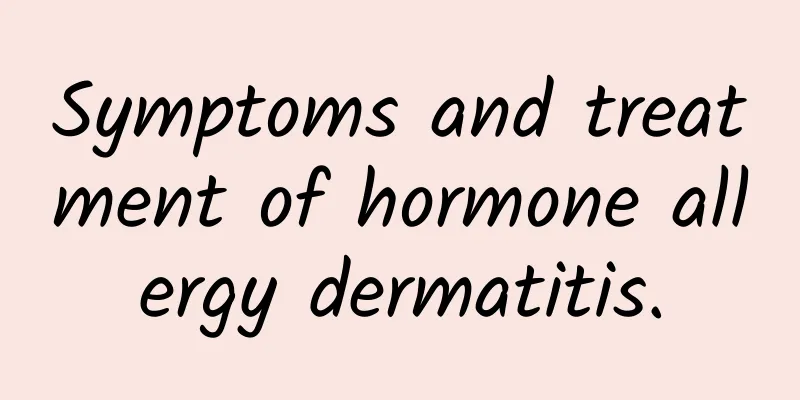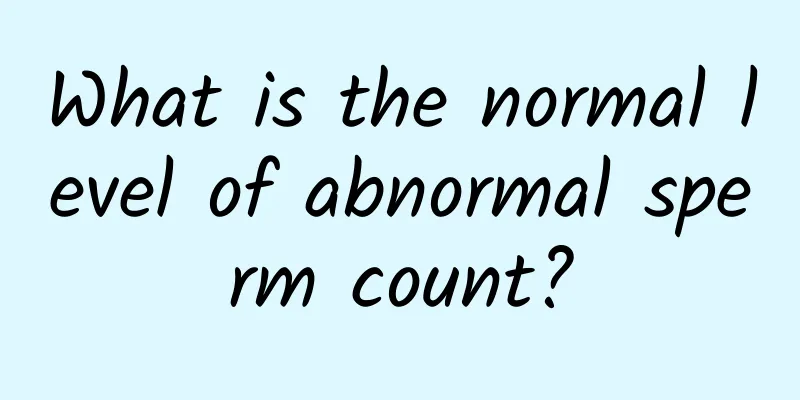Symptoms and treatment of hormone allergy dermatitis.

|
Most people have experienced allergies, and I am no exception. When an allergy occurs, the skin usually reacts with itching, burning, and other sensations. So what is hormone allergic dermatitis? What are the symptoms? 1. What is hormone allergy dermatitis? Hormone allergic dermatitis is a skin allergy symptom caused by long-term use of hormones. Symptoms will not appear immediately in the early stage of hormone use, but will gradually appear over time. Science shows that a history of hormone use for more than 3 weeks can cause hormone allergy symptoms, also known as hormone allergic dermatitis. 2. Symptoms of hormone allergy dermatitis Once hormone allergic dermatitis is invaded by hormones, the epidermis becomes very thin and the barrier function is damaged. When contacting irritants, it is very easy to cause various symptoms, such as redness, swelling, itching, pain, and in severe cases, yellow discharge, crusting, tension, redness when exposed to heat, etc. Patients have to continue to use hormones, and their dependence on hormones is more obvious; when the product is used again, the above symptoms and signs will quickly subside. If it is discontinued, the dermatitis symptoms will quickly recur, and gradually worsen, and the effect will decrease. It is necessary to increase the dosage or switch to a more potent hormone product, which is prone to recurrence. 1. Physical signs The facial skin may experience varying degrees of atrophy, thinning, shiny, diffuse flushing or erythema, or capillary dilation, local swelling, dryness and desquamation, or acne-like rash or rosacea or skin atrophy lines or folliculitis pustules. 2. Symptoms The patient may experience local itching, burning pain, tightness, swelling or dryness. The above symptoms may be aggravated by heat (such as sun exposure, hot baths, hot steam fumigation) and alleviated by cold. 3. The primary disease worsens after discontinuation of corticosteroids, and there are obvious hormone-dependent symptoms, that is, the condition improves rapidly after topical application of corticosteroids. Once the drug is stopped, more severe hormone rebound dermatitis will occur in 1-2 days or 3-5 days, and even bacterial and fungal infections may be induced. 3. Causes of hormone allergic dermatitis 1. Doctor Abuse This is caused by insufficient judgment of the patient's symptoms, or giving hormone products in pursuit of quick results, resulting in long-term use of the products by the patient. 2. Patient Abuse Some people abuse hormones for a long time due to misleading doctors or their own lack of understanding of the scope of application and adverse reactions of hormones. Some even use hormone-containing products instead of cosmetics and use them on normal skin for a long time, thus forming dependence. 3. Merchants add illegally Illegal addition of hormone ingredients to drugs or non-drugs to achieve quick results or to make huge profits. Consumers will become dependent on them once they use them for a long time. 4. Hormone lotion Toner is a skincare product that many women cannot live without every day. However, many popular toners have been exposed to contain hormones. Long-term topical use of hormone-containing cosmetics will lead to hormone-dependent dermatitis. 4. How to treat hormone allergy dermatitis? Regarding the treatment of hormone allergic dermatitis, both Chinese and Western medicine have their own views. 1. Western medicine There is no ideal treatment for hormone allergic dermatitis. The main treatment is to gradually reduce the strength and dosage of hormone drugs, and then combine them with antibacterial, anti-inflammatory and anti-allergic drugs until all hormone drugs are withdrawn. The treatment process takes 1-2 years, which is difficult for most patients to accept. The treatment principle of this disease is local protection and soothing, and more importantly, the self-renewal of the skin. However, due to the long epidermal transit time and the fact that hormones can cause epidermal nutritional disorders, the recovery of this disease is slow. The treatment process takes 1-2 years, and most patients find it difficult to accept this slow recovery process. In this regard, doctors and patients' families should do a good job of ideological work for patients, ensure that they have a full understanding of the effects and side effects of hormones, and enhance their confidence in defeating the disease. 2. Traditional Chinese Medicine Traditional Chinese medicine believes that hormones are pungent, dry, sweet and warm in nature. If used improperly for a long time, they can help yang turn into heat, generate heat and consume body fluids, and cause hyperactivity of yang to damage yin. Yin deficiency and internal heat type: erythema on the affected area, appearing and disappearing from time to time, hot flashes on the skin, especially in the afternoon, dry local skin, small scales, thin epidermis, dilated capillaries or pigmentation, accompanied by irritability and thirst, red tongue with little fluid, and thin pulse. Treatment should be to nourish Yin, clear heat and reduce redness. Traditional Chinese medicine treats dermatitis by eliciting the accumulated heat and toxins in the body and eliminating them, while improving the physical condition and restoring normal functions. The methods used include strengthening the spleen, removing dampness, activating blood circulation, clearing diarrhea, etc., depending on the patient's physical condition, and using fat-gelling creams. According to TCM syndrome differentiation, hormone allergic dermatitis is caused by excessive heart fire, which damages the blood vessels. The basic method should be to clear away heat and cool the blood, and on this basis, flexibly differentiate and treat. Blood-heat type: The affected area has erythema, papules, swelling, and rarely pustules. It is itchy, with mild pain and obvious burning sensation. It is often accompanied by irritability, thirst, red tongue, and rapid pulse. The treatment should be cooling blood, clearing heat, and detoxifying. In the case of damp-heat conglomeration type, the affected area has erythema, papules, and pustules, which come and go, recur repeatedly, the local skin is oily, itchy, painful, accompanied by dry and sticky mouth, poor appetite, greasy tongue coating, and slippery and rapid pulse. Treatment should be heat-clearing, dampness-promoting, and detoxification. |
<<: Coughing is not necessarily a cold. What are the causes of coughing?
>>: What to do if your skin is dry and has wrinkles? I have 3 tips to share with you~
Recommend
Will smoking and drinking cause prostatitis?
Will smoking and drinking cause prostatitis? Urol...
Itching along the line from the testicle to the anus
In modern society, due to the accelerated pace of...
What medicine can men take to relieve back pain?
What foods should boys eat for back pain? Back pa...
What are the fitness steps for men?
If men want to keep fit, they need to master good...
Will I get pregnant the first time I ejaculate?
It is possible for a man to get pregnant during h...
How to treat penile hemangioma?
Compared with female genitals, male penis is ofte...
What foods can men eat to supplement calcium? These 5 must be remembered
No matter who you are, calcium supplementation is...
Do boys who are afraid of itching have kidney deficiency?
Kidney deficiency is not a "lonely body"...
What are the dangers of boys masturbating frequently?
Generally speaking, male sexual impulse is the ea...
How to remove crow's feet? Three methods to help you
Crow's feet are a type of wrinkle that easily...
Male genital itching and peeling
Male genital itching and peeling can be caused by...
Standard table of normal male head circumference
The size of a baby's head circumference has a...
Treatment of male menopause syndrome
I believe that everyone is familiar with male men...
What causes weak ejaculation?
The problem of impotent ejaculation seriously tro...
The glans of the penis is a little red and swollen. It is caused by this
For some male friends, redness and swelling at th...









